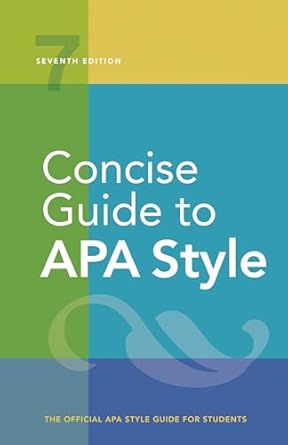[toc]
proper citation avoid plagiarism boost academic integrity
Concise Guide to APA Style: 7th Edition (OFFICIAL)
Page 199 Review
The Importance of Proper Citation: A Commentary on Academic Integrity
Academic writing demands rigor and precision, not just in the formulation of ideas but also in acknowledging the sources that have informed and shaped those ideas.
The excerpt provided highlights the critical role of proper citation in maintaining academic integrity and avoiding plagiarism.
It emphasizes the ethical and practical consequences of failing to give due credit to the original thinkers and creators.
Let’s delve into a deeper understanding of this crucial aspect of scholarly work.
Understanding Plagiarism and Its Consequences
The text clearly defines plagiarism as a serious offense, stating that it involves “unfairly disregard[ing] those who exerted the effort to complete their own work.” This isn’t merely a matter of following rules; it’s about respecting intellectual property and the hard work of others.
The consequences of plagiarism are far-reaching, affecting both professional writers and students.
As the excerpt notes, “Professional writers who try to publish plagiarized work face rejection from publication and possible censure in their place of employment.
Students who plagiarize may fail the assignment or course, be placed on academic probation, or be expelled from their institution.” This underscores the severity with which academic institutions and the publishing world view plagiarism.
The Nuances of Citation: When and How to Cite
The excerpt further elucidates the specific scenarios that necessitate citation.
It’s not just about direct quotes; it extends to paraphrasing, reprinting tables or figures, and even using images from the internet.
The text succinctly explains: “To avoid plagiarism, provide appropriate credit to the source whenever you do the following: paraphrase (i.e., state in your own words) the ideas of others; directly quote the words of others; reprint or adapt a table or figure, even images from the internet that are free or licensed in the Creative Commons; reprint a long text passage or commercially copyrighted test item.” This comprehensive list provides a clear guideline for writers, ensuring they are aware of the various instances where attribution is required.
The Role of Common Knowledge
Interestingly, the passage distinguishes between original ideas and common knowledge.
The example provided, “the idea that some people come up with funny ideas more easily than do others,” is deemed common knowledge and, therefore, does not require citation.
This distinction is crucial, as it prevents unnecessary and cumbersome citation practices.
However, it’s essential to exercise caution when determining what constitutes common knowledge, as interpretations can vary across disciplines and contexts.
Humor and Citation: An Example in Context
The opening paragraph of the example text introduces the concept of humor and its role in everyday life. “Humor plays an important role in everyday life, from interacting with strangers to attracting mates (Bressler & Balshine, 2006; Earleywine, 2010; Tornquist & Chiappe, 2015).
Some people, however, come up with funny and witty ideas much more easily than do others.
In this study, we examined the role of cognitive abilities in humor production, a topic with a long past (e.g., Feingold & Mazzella, 1991; Galloway, 1994) that has recently attracted more attention (Greengross & Miller, 2011; Kellner & Benedek, 2016).
Humor production ability is measured with open-ended tasks (Earleywine, 2010), the most common of which involves asking participants to write captions for single-panel cartoons (for a review, see Nusbaum & Silvia, 2017).” Note how each assertion draws upon the work of previous researchers and the text also provides citations to representative sources for each new idea in the text.
The Significance of Author-Date Citation
The excerpt mentions the use of “author-date citation” as the standard format for most works.
This system, commonly used in styles like APA and Chicago, allows readers to quickly identify the source of information and locate it in the bibliography or reference list.
While the specific formatting rules may vary depending on the citation style, the underlying principle remains the same: providing clear and concise attribution to the original source.
Copyright Considerations and Permissions
The passage also touches upon the complexities of copyright law, particularly when reprinting or adapting tables, figures, and images, or when using long quotations.
It advises authors to seek permission when necessary, highlighting the importance of respecting copyright regulations.
This aspect of citation goes beyond simply giving credit; it involves legal considerations that can significantly impact the publication process.
Conclusion: Upholding Academic Standards
In conclusion, the excerpt effectively underscores the critical importance of proper citation in academic writing.
It emphasizes the ethical responsibility to acknowledge the work of others, the practical consequences of plagiarism, and the specific guidelines for when and how to cite sources.
By adhering to these principles, writers can contribute to a culture of intellectual honesty and maintain the integrity of scholarly discourse.
Understanding and implementing proper citation practices is not merely a technical skill; it is a cornerstone of academic integrity and responsible scholarship.
Buy full ebook for only $18: https://www.lulu.com/shop/american-psychological-association/concise-guide-to-apa-style-7th-edition-official/ebook/product-rmzpq54.html?page=1&pageSize=4
Proper Citation Avoid Plagiarism Boost Academic Integrity
Read more: Statistical Reporting Guide: Best Practices for Researchers


Leave a Reply